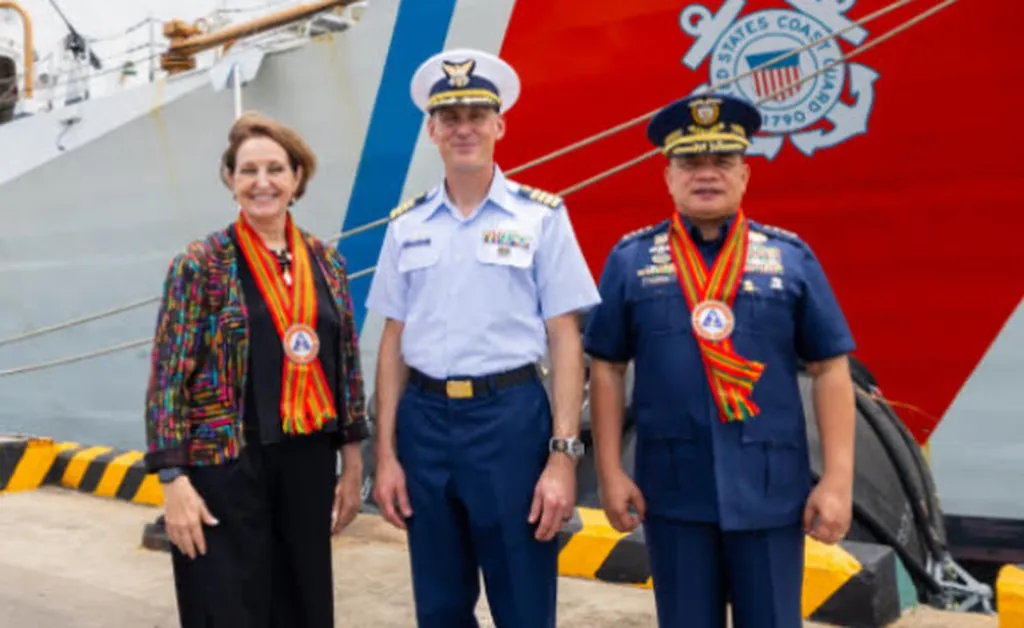The Philippine Coast Guard (PCG) and the United States have launched a P140-million program to bolster the PCG’s fleet operations and maritime law enforcement capabilities. This initiative, unveiled aboard the BRP Gabriela Silang at Pier 13 in Manila, underscores deepening security ties in the Indo-Pacific region. The program, funded by the US Department of State’s Bureau of International Narcotics and Law Enforcement Affairs and implemented through the US Coast Guard (USCG), is more than just a hardware investment—it’s a commitment to building human capital.
US Ambassador to the Philippines MaryKay Carlson emphasized this point during the launch ceremony, stating, “This is more than an investment in hardware, as it is an investment in people.” The three-year initiative will provide 113 training courses and on-the-job training opportunities for PCG personnel in the United States, along with 60 formal courses and engagements with subject matter experts in the Philippines. This cooperation includes technical training for vessel operations and maintenance, on-the-job training aboard USCG vessels and facilities, and advisory support to strengthen PCG doctrines and procedures for fleet management and training.
PCG Commandant Adm. Ronnie Gil Gavan expressed gratitude for the US support, noting that the program’s impact extends beyond technical capacity. “This partnership is crucial, especially amid heightened tensions in the West Philippine Sea,” Gavan said. The PCG plays a pivotal role in asserting the country’s maritime rights and ensuring the safety of Filipino fishermen and vessels in the region.
The timing of this initiative is significant. Just days before the launch, the PCG and the Bureau of Fisheries and Aquatic Resources (BFAR) vessels faced disruption near Pag-asa Island. Chinese Coast Guard and militia ships reportedly carried out dangerous maneuvers, including the use of water cannons, and deliberately rammed a BFAR vessel, causing minor damage. Such incidents highlight the need for enhanced maritime capabilities and international cooperation.
This program builds on previous US support to the PCG, including technical training, logistics systems planning, and equipment donations aimed at improving vessel maintenance and maritime law enforcement. The continued collaboration between the PCG and the USCG will not only strengthen the PCG’s operational readiness but also foster a deeper understanding and trust between the two coast guards. As Ambassador Carlson noted, “Together, we will continue to ensure that these waters remain safe, open, and secure for all.”
The partnership comes at a critical juncture, as the PCG navigates the complexities of maritime security in the Indo-Pacific. With the USCG’s expertise and the PCG’s frontline experience, this initiative could set a precedent for future collaborations in the region. It’s a reminder that in an era of growing maritime tensions, strategic alliances and shared expertise are key to maintaining stability and security.

